- Home
- Arthur C. Clarke
Rama II r-2
Rama II r-2 Read online
Rama II
( Rama - 2 )
Arthur C. Clarke
Gentry Lee
70 years after the events of Rendezvous with Rama, a second Raman vessel enters our solar system. Its arrival is expected and an expedition is sent to unlock more of Rama’s mysteries, but the crew are unprepared both for what they find and for the conflicts that arise between them. Rama II brings new characters into a new story and is mostly unrelated to the original and largely serves to set up its own sequels. It ends with three of the twelve astronauts stranded inside Rama as it travels out of the solar system, Nicole des Jardins Wakefield, Richard Wakefield and Michael O’Toole.
Unlike Rendezvous with Rama, which depicted a utopian future and focused almost entirely on the hard science fiction elements regarding the scientific wonders of the alien spacecraft, Rama II and its sequels deconstruct Clarke’s vision of human colonies throughout the solar system through a global economic crisis that forced their almost total deactivation. Then follows a very different storytelling that brings forward contemporary issues like abortion, racism, drug abuse and organized crime.
(Wikipedia)
In 1973, Clarke’s Rendezvous with Rama won the Hugo, Nebula and Campbell awards. This new novel is the second in a trilogy about the mystifying world-ships and their flybys of our solar system. Unfortunately, the focus is no longer on alien mysteries, but on the petty concerns of an unlikely assortment of cosmonauts. The 12 specialists chosen to explore a second Raman craft passing through human space 70 years after the first are more involved with adultery, religion and media contracts than they are with scientific advancement. Not only are their actions unrealistic, but the chapter titles telegraph what comes next. The excitement of discovery that was present in the first book is altogether missing from this soap opera plot.
(Publishers Weekly)
Rama II
by Arthur C. Clarke and Gentry Lee
I never imagined, until a few years ago, that I would ever collaborate with another writer on a work of fiction. Non-fiction was different: I’ve been involved in no less than fourteen multi-author projects (two with the editors of Life, and you don’t get more multiplex than that). But fiction — no way! I was quite sure I would never let any outsider tamper with my unique brand of creativity…
Well, a funny thing happened on the way to the word processor. Early in 1986 my agent, Scott Meredith, called me in his most persuasive “Don’t-say-no-until-I’ve-finished” mode. There was, it seemed, this young genius of a movie producer who was determined to film something — anything — of mine. Though I’d never heard of Peter Guber, as it happened I had seen two of his movies (Midnight Express, The Deep), and been quite impressed by them. I was even more impressed when Scott told me that Peter’s latest, The Color Purple, had been nominated for half a dozen Oscars.
However, I groaned inwardly when Scott went on to say that Peter had a friend with a brilliant idea he’d like me to develop into a screenplay. I groaned, because there are no new ideas in s.f, and if it really was brilliant I’d have thought of it already.
Then Scott explained who the friend was, and I did a double-take. The project suddenly looked very exciting indeed, for reasons that had nothing to do with Peter Guber, but a lot to do with Stanley Kubrick.
Flashback. Twenty years earlier, in 2007: A Space Odyssey, Stanley and I had visited the moons of Jupiter, never dreaming that these completely unknown worlds would, in fact, be reconnoitered by robots long before the date of our movie. In March and July 1979, the two Voyager probes revealed that lo, Europa, Ganymede, and Callisto were stranger places than we’d dared to imagine. The stunning views of Jupiter’s giant satellites made it possible — no, imperative — for me to write 2070: Odyssey Two. This time around, the Jovian sequences could be based on reality, not imagination; and when Peter Hyams filmed the book in 1984, he was able to use actual images from the Voyager spacecraft as backgrounds for much of the action.
Spectacular though the results of the 1979 missions were, it was confidently hoped that they would be quite surpassed within a decade. The Voyager spacecraft spent only a few hours in the vicinity of Jupiter, hurtling past the giant planet and its moons on the way to Saturn. But in May 1986, NASA planned to launch Galileo, an even more ambitious space probe. This would make not a brief fly-by, but a rendezvous; Galileo would spend two years, starting in December 1988, on a detailed survey of Jupiter and its major moons. By 1990, if all went well, there would be such a flood of new information about these exotic worlds that a third Space Odyssey would be inevitable. That was what I was planning to write; I’d hitched my wagon to Galileo, and could hardly care less about some amateur science fiction author’s ideas. How to turn him down politely? I was still pondering this when Scott continued:
“Peter Guber wants to fly out to Sri Lanka, just for thirty-six hours, to introduce this guy to you. His name is Gentry Lee, and let me explain who he is. He works at the Jet Propulsion Laboratory, and he’s the chief engineer on Project Galileo. Have you heard of that?”
“Yes,” I said faintly.
“And before that, he was director of mission planning for the Viking landers, that sent back those wonderful pictures from Mars. Because he felt the public didn’t appreciate what was going on in space, he formed a company with your friend Carl Sagan to make Cosmos — he was manager of the whole TV series—”
“Enough!” I cried. “This man I have to meet. Tell Mr. Gabor to bring him here right away.”
“The name,” said Scott, “is Guber. Peter Guber.”
Well, it was agreed that the two of them would fly out to Sri Lanka, and if I liked Gentry’s idea (and, equally important, Gentry) I’d develop an outline — perhaps a dozen pages — which would give characters, locations, plot, and all the basic elements from which any competent script writer could generate a screenplay.
They arrived in Colombo on February 12, 1986 — just two weeks after the Challenger disaster. 1986 was going to be the Big Year for Space, but now the entire NASA program was in total disarray. In particular, Galileo would be delayed for years. It would be 1995 before there could be any further news from the moons of Jupiter. I could forget about Odyssey Three — just as Gentry could forget about doing anything with Galileo except getting it back from the Cape and putting it in mothballs.
Happily, the Guber-Lee-Clarke Summit went well, and for the next few weeks I filled floppy disks with concepts, characters, backgrounds, plots — anything which seemed even remotely useful to the story we’d decided to call Cradle. Gentry liked my four-thousand-word outline and flew out to Sri Lanka again so that we could fill in the details. From then onward, we were able to collaborate by making frequent phone calls and flying yards of printout across the Pacific.
The writing took the best part of a year, though of course we were both involved in other projects as well. When I discovered that Gentry had a considerably better background in English and French literature than I did (by now I was immune to such surprises) I heroically resisted all attempts to impose my own style on him. This upset some longtime ACC readers, who when Cradle appeared under our joint names were put out by passages where I should have done a little more sanitizing. The earthier bits of dialogue, I explained, were the result of Gentry’s years with the hairy-knuckled, hard-drinking engineers and mathematicians of JPL’s Astrodynamics Division, where the Pasadena cops often have to be called in to settle bare-fisted fights over Bessel Functions and nonlinear partial differential equations.
Though I’d greatly enjoyed working with Gentry, when we’d finished rocking Cradle I had no plans for further collaboration — because Halley’s Comet was now dominating my life, as it had failed to dominate terrestrial skies. I realized
that its next appearance, in 2061, would provide a splendid opportunity for a third Space Odyssey. (If the much-delayed Galileo does perform as hoped in 1995 and beams back megabytes of new information from the Jovian system, there may be a Final Odyssey. But I make no promises.)
By the summer of 1987, 2061: Odyssey Three was doing very nicely in the bookstores, thank you, and I was once again beginning to feel those nagging guilt pains that assail an author when he’s not Working On A Project. Suddenly, I realized that one was staring me right in the face.
Fifteen years earlier, the very last sentence of Rendezvous With Rama had read: “The Ramans do everything in threes.” Now, those words were a last-minute afterthought when I was doing the final revision. I had not — cross my heart — any idea of a sequel in mind; it just seemed the correct, open-ended way of finishing the book. (In real life, of course, no story ever ends.)
Many readers — and reviewers — jumped to the conclusion that I had planned a trilogy from the beginning. Well, I hadn’t — but now I realized it was a splendid idea. And Gentry was just the man for the job: He had all the background in celestial mechanics and space hardware to deal with the next appearance of the Ramans.
I quickly outlined a spectrum of possibilities, very much as I had done with Cradle, and in a remarkably short time Scott had sold a whole package to Bantam’s Lou Aronica. Rama II, The Garden of Rama, and Rama Revealed would be written and delivered during the 1989-91 period.
So once again Gentry Lee is commuting across the Pacific for brainstorming sessions in the Sri Lankan hills, and the postman is complaining about the bulky printouts he has to balance on his bicycle. This time around, however, technology has speeded up our intercontinental operations. The fax machine now allows us to exchange ideas almost in real time; it’s far more convenient than the Electronic Mail link Peter Hyams and I used when scripting 20!0 (see The Odyssey File),
There is much to be said for this kind of long-distance collaboration; if they are too close together, co-authors may waste a lot of time on trivia. Even a solitary writer can think of endless excuses for not working; with two, the possibilities are at least squared.
However, there is no way of demonstrating that a writer is neglecting his job; even if his snores are deafening, his subconscious may be hard at work. And Gentry and I knew that our wildest excursions into literature, science, art, or history might yield useful story elements.
For example, during the writing of Rama II it became obvious that Gentry was in love with Eleanor of Aquitaine — don’t worry, Stacey, she’s been dead for 785 years — and I had to tactfully dissuade him from devoting pages to her amazing career. (If you wonder how E of A could have the remotest connection with interstellar adventures, you have pleasures in store.)
I certainly learned a lot of French and English history from Gentry that they never taught me at school. The occasion when Queen Eleanor berated her son, the intrepid warrior-king Richard the Lion Heart in front of his troops for failing to produce an heir to the throne must have been one of the more piquant moments in British military history. Alas, there was no way we could work in this gallant but gay Corleone, who was often a godfather, never a father… very unlike Gentry, whose fifth son arrived toward the end of Rama II.
But you will meet Gentry’s most cherished creation, the yet-to-be-born St. Michael of Siena. One day, I am sure, you’ll encounter him again, in books that Gentry will publish under his own name, with the minimum of help or hindrance from me.
As I write these words, we’re just coming up to the midway point of our four-volume partnership. And though we think we know what’s going to happen next, I’m sure the Ramans have quite a few surprises in store for us…
— Arthur C. Clarke
1
RAMA RETURNS
The great radar pulse generator Excalibur, powered by nuclear explosions, had been out of service for almost half a century. It had been designed and developed in a frantic effort during the months following the transit of Rama through the solar system. When it was first declared operational in 2132, Excalibur’s announced purpose was to give Earth ample warning of any future alien visitors: one as gigantic as Rama could be detected at interstellar distances — years, it was hoped, before it could have any effect on human affairs.
That original commitment to build Excalibur had been made even before Rama had passed perihelion. As the first extraterrestrial visitor rounded the sun and headed out toward the stars, armies of scientists studied the data from the only mission that had been able to rendezvous with the intruder.
Rama, they announced, was an intelligent robot with absolutely no interest in our solar system or its inhabitants. The official report offered no explanations for the many mysteries encountered by the investigators; however, the experts did convince themselves that they understood one basic principle of Raman engineering. Since most of the major systems and subsystems encountered inside Rama by the human explorers had two functional backups, it appeared that the aliens engineered everything in threes. Therefore, since the entire giant vehicle was assumed to be a machine, it was considered highly likely that two more Rama spacecraft would be following the first visitor.
But no new spaceships entered the solar neighborhood from the empty reaches of interstellar space. As the years passed the people on Earth confronted more pressing problems. Concern about the Ramans, or whoever it was that had created that drab cylinder fifty kilometers long, abated as the lone alien incursion passed into history. The visit of Rama continued to intrigue many scholars, but most members of the human species were forced to pay attention to other issues. By the early 2140s the world was in the grip of a severe economic crisis. There was no money left to maintain Excalibur. Its few scientific discoveries could not justify the enormous expense of assuring the safety of its operation. The great nuclear pulse generator was abandoned.
Forty-five years later it took thirty-three months to return Excalibur to operational status. The primary justification for the refurbishment of Excalibur was scientific. During the intervening years radar science had flourished and produced new methods of data interpretation that had greatly enhanced the value of the Excalibur observations. As the generator again took images of the distant heavens, almost nobody on Earth was expecting the arrival of another Rama spacecraft.
The operations manager at Excalibur Station did not even inform his supervisor the first time the strange blip appeared on his data processing display. He thought it was an artifact, a bogey created by an anomalous processing algorithm. When the signature repeated several times, however, he paid closer attention. The manager called in the chief Excalibur scientist, who analyzed the data and decided the new object was a long period comet. It was another two months before a graduate student proved that the signature belonged to a smooth body at least forty kilometers in its longest dimension.
By 2179 the world knew that the object hurtling through the solar system toward the inner planets was a second extraterrestrial spacecraft. The International Space Agency (ISA) concentrated its resources to prepare a mission that would intercept the intruder just inside the orbit of Venus in late February of 2200. Again the eyes of humanity looked outward, toward the stars, and the deep philosophical questions raised by the first Rama were again debated by the populace on Earth. As the new visitor drew nearer and its physical characteristics were more carefully resolved by the host of sensors aimed in its direction, it was confirmed that this alien spacecraft, at least from the outside, was identical to its predecessor. Rama had returned. Mankind had a second appointment with destiny.
2
TEST AND TRAINING
The bizarre metallic creature inched along the wall, crawling up toward the overhang. It resembled a skinny armadillo, its jointed snail body covered by a thin shell that curled over and around a compact grouping of electronic gadgetry astride the middle of its three sections. A helicopter hovered about two meters away from the wall. A long flexible arm w
ith a pincer on the end extended from the nose of the helicopter and just missed closing its jaws around the odd creature.
“Dammit,” muttered Janos Tabori, “this is almost impossible with the “copter bouncing around. Even in perfect conditions it’s hard to do precision work with these claws at full extension.” He glanced over at the pilot. “And why can’t this fantastic flying machine keep its altitude and attitude constant?”
“Move the helicopter closer to the wall,” ordered Dr. David Brown.
Hiro Yamanaka looked at Brown without expression and entered a command into the control console. The screen in front of him flashed red and printed out the message, command unacceptable. insufficient tolerances. Yamanaka said nothing. The helicopter continued to hover in the same spot.
“We have fifty centimeters, maybe seventy-five, between the blades and the wall,” Brown thought out loud. “In another two or three minutes the biot will be safe under the overhang. Let’s go to manual and grab it. Now. No mistakes this time, Tabori.”
For an instant a dubious Hire Yamanaka stared at the balding, bespectacled scientist sitting in the seat behind him. Then the pilot turned, entered another command into the console, and switched the large black lever to the left position. The monitor flashed, in manual mode. no automatic protection. Yamanaka gingerly eased the helicopter closer to the wall.
Engineer Tabori was ready. He inserted his hands in the instrumented gloves and practiced opening and closing the jaws at the end of the flexible arm. Again the arm extended and the two mechanical mandibles deftly closed around the jointed snail and its shell. The feedback loops from the sensors on the claws told Tabori, through his gloves, that he had successfully captured his prey. “I’ve got it,” he shouted exultantly. He began the slow process of bringing the quarry back into the helicopter.

 Time's Eye
Time's Eye The Sentinel
The Sentinel Prelude to Space
Prelude to Space Earthlight (Arthur C. Clarke Collection)
Earthlight (Arthur C. Clarke Collection) 2001: A Space Odyssey
2001: A Space Odyssey Against the Fall of Night
Against the Fall of Night Glide Path
Glide Path The Lost Worlds of 2001
The Lost Worlds of 2001 The Trigger
The Trigger Reach for Tomorrow
Reach for Tomorrow Islands in the Sky
Islands in the Sky The Songs of Distant Earth
The Songs of Distant Earth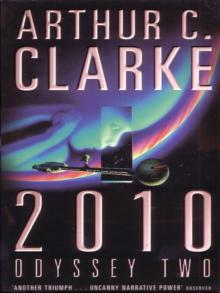 2010: Odyssey Two
2010: Odyssey Two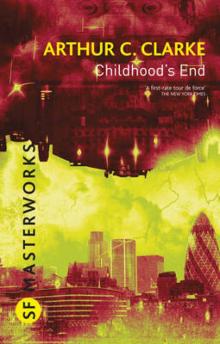 Childhood's End
Childhood's End 3001: The Final Odyssey
3001: The Final Odyssey The Fountains of Paradise
The Fountains of Paradise Rama: The Omnibus
Rama: The Omnibus The Hammer of God
The Hammer of God Beyond the Fall of Night
Beyond the Fall of Night Tales From Planet Earth
Tales From Planet Earth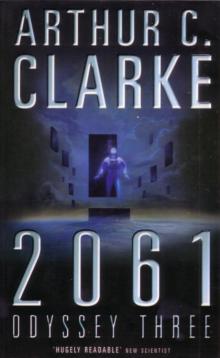 2061: Odyssey Three
2061: Odyssey Three Tales From the White Hart
Tales From the White Hart The City and the Stars/The Sands of Mars
The City and the Stars/The Sands of Mars The Star
The Star Imperial Earth
Imperial Earth The Light of Other Days
The Light of Other Days Firstborn
Firstborn The Other Side of the Sky
The Other Side of the Sky Cradle
Cradle The Wind From the Sun
The Wind From the Sun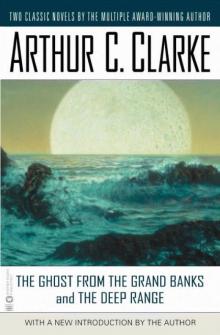 The Ghost From the Grand Banks and the Deep Range
The Ghost From the Grand Banks and the Deep Range The Deep Range
The Deep Range Expedition to Earth
Expedition to Earth A Fall of Moondust
A Fall of Moondust Dolphin Island (Arthur C. Clarke Collection)
Dolphin Island (Arthur C. Clarke Collection) Richter 10
Richter 10 The City and the Stars
The City and the Stars Tales of Ten Worlds
Tales of Ten Worlds Dolphin Island
Dolphin Island Expedition to Earth (Arthur C. Clarke Collection: Short Stories)
Expedition to Earth (Arthur C. Clarke Collection: Short Stories) Sunstorm
Sunstorm Rendezvous with Rama
Rendezvous with Rama The Collected Stories of Arthur C. Clarke
The Collected Stories of Arthur C. Clarke Trouble with the Natives
Trouble with the Natives Rama Revealed r-4
Rama Revealed r-4 The Sixth Science Fiction Megapack
The Sixth Science Fiction Megapack Firstborn to-3
Firstborn to-3 The Ghost from the Grand Banks
The Ghost from the Grand Banks Into the Comet
Into the Comet The Fires Within
The Fires Within 2061: Odyssey 3
2061: Odyssey 3 The Ninth Science Fiction Megapack
The Ninth Science Fiction Megapack The Coast of Coral
The Coast of Coral The Ghost from the Grand Banks (Arthur C. Clarke Collection)
The Ghost from the Grand Banks (Arthur C. Clarke Collection) The Space Trilogy
The Space Trilogy A Meeting With Medusa
A Meeting With Medusa 2001: A Space Odyssey (Arthur C. Clarke Collection: The Odyssey)
2001: A Space Odyssey (Arthur C. Clarke Collection: The Odyssey) Islands in the Sky (Arthur C. Clarke Collection)
Islands in the Sky (Arthur C. Clarke Collection) Rama II r-2
Rama II r-2 Glide Path (Arthur C. Clarke Collection)
Glide Path (Arthur C. Clarke Collection) The Sixth Science Fiction Megapack: 25 Classic and Modern Science Fiction Stories
The Sixth Science Fiction Megapack: 25 Classic and Modern Science Fiction Stories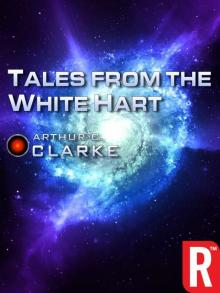 Tales from the White Hart (Arthur C. Clarke Collection: Short Stories)
Tales from the White Hart (Arthur C. Clarke Collection: Short Stories) The Reluctant Orchid
The Reluctant Orchid